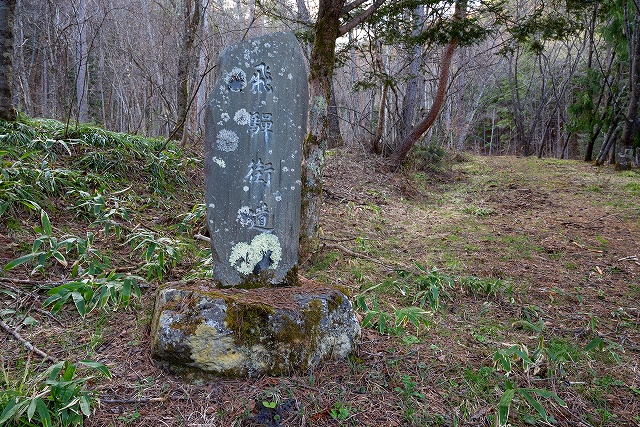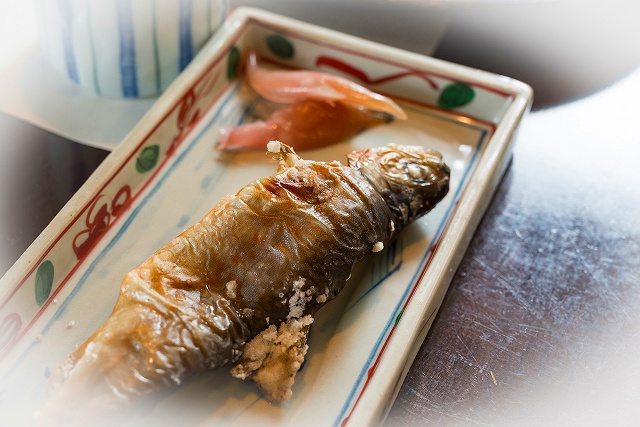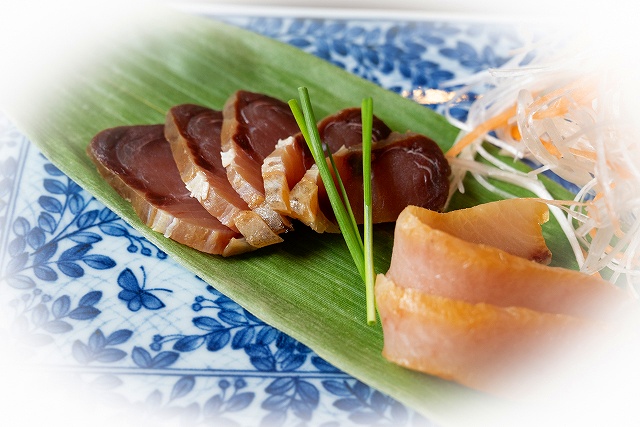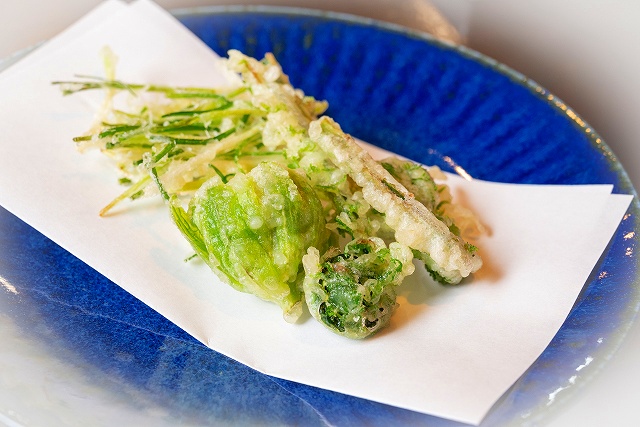
The Yamashita residence. The Yamashita family made a fortune in horse farming in the Meiji era. This majestic wooden architecture is now a museum run by Kiso town. One of the materials on display tells us that Yellowtail was on the wedding banquet menu for a daughter of the family. Wait a minute! Yellowtail is saltwater fish. Was it possible to carry them to a small village far from the sea 150 years ago?
Sending someone salted salmon (Aramaki-sake) as an end-of-year gift is a common practice in Japan. So, what people usually expect for the fish of the New Year’s feast is baked salmon. But for people in the middle to the south of Nagano prefecture, it is different. We prefer to eat yellowtail for New Year’s banquets. Up to about a hundred years ago, people in Takayama carried those yellowtails landed in Toyama port to Kiso on their backs, walking such a long distance in the snow! Can you believe that they weighed more than 60kg?

Shinning Nishino river illuminated by the afternoon sun. Peple from Takayama carring the heavy yellowtail on their backs must have seen this same sean 100 years ago. But the season was midwinter before new year’s day. So, what they were looking at must have been the frozen Nishino river and the snow scene.

The Hachiman shrine’s torii gate at the entrance to the Nishino pass, Eye-catching yellow flowers are narcissus.

The photo shows the sign for the Nishino pass. When we want to visit the lookout and castle ruin, we must turn to the right at the sign 20m behind this one. The lookout is a little higher in elevation (1422m) than the highest point of the Nishino pass.

The last 50m before leaching to the lookout is a steep uphill. It shows that we are climbing to a fortress. This steep slope must be a civil engineering work in the Warring States period (15 to 16th century).

Now, we look at Mt. Ontake from the lookout. The perfectly flat spacious square shows that some architectures were here long ago. Local people call this place “Shiroyama (castle mountain),” but it could be a small fortress or a facility functioning as a beacon platform.

As we go down towards Tabanosawa village, we see a few places where many Buddha statues and monuments are gathered in one place. This statue is called Koyasu-Kannon, a guardian goddess of mercy for children.

This outstanding Hida-Kaido monument was built here for tourism purposes.

At the end of the hike, we can finally enjoy the special lunch with yellowtail cuisine. The Hida-buri means yellowtail carried from Hida. The famous soba restaurant Nakanishiya will serve this special menu only for this Hida-buri tour.

Today’s appetizer. At this time, several spring mountain plants and Sunki were on the plate. Sunki is a traditional pickle in Kiso town. It is the beetroot fermented with lactic acid. Completely natural without any additives or salt.

We were lucky to have baked mountain trout. The meat is plump and soft to the bone. You can eat it from head to tail!

Salted yellowtail you are expecting! People in Kiso used to eat grilled salty yellowtail. But, on this tour, we serve them with a form close to the smoked fish. This way, you can directly sense the flavor of a slightly fermented yellowtail.

Mountain plant’s Tenpura are available only from May to June. The contents of the lunch varies on season, and that is also the pleasure for attending to this tour.

Soba noodles with mushrooms are served at the end. The restaurant doesn’t use animal broth in dishes served on this tour. So, vegetarians and vegans are also welcome!

